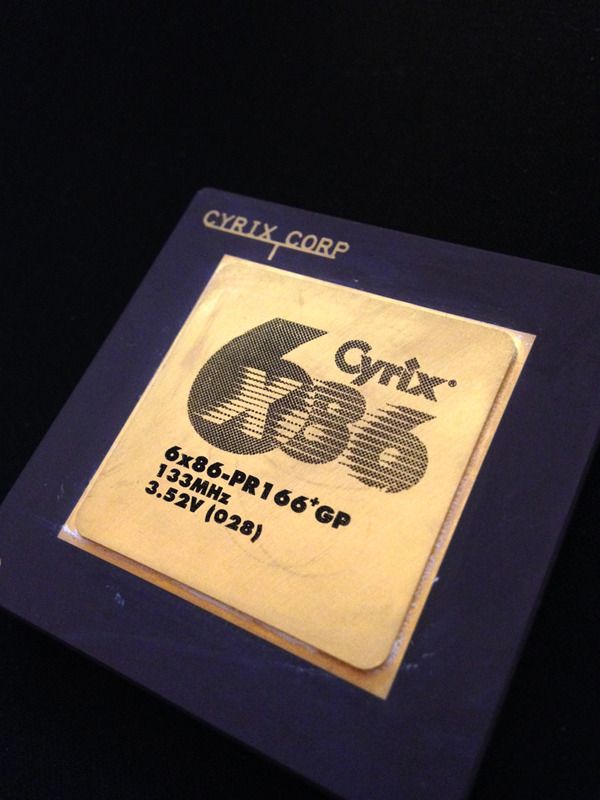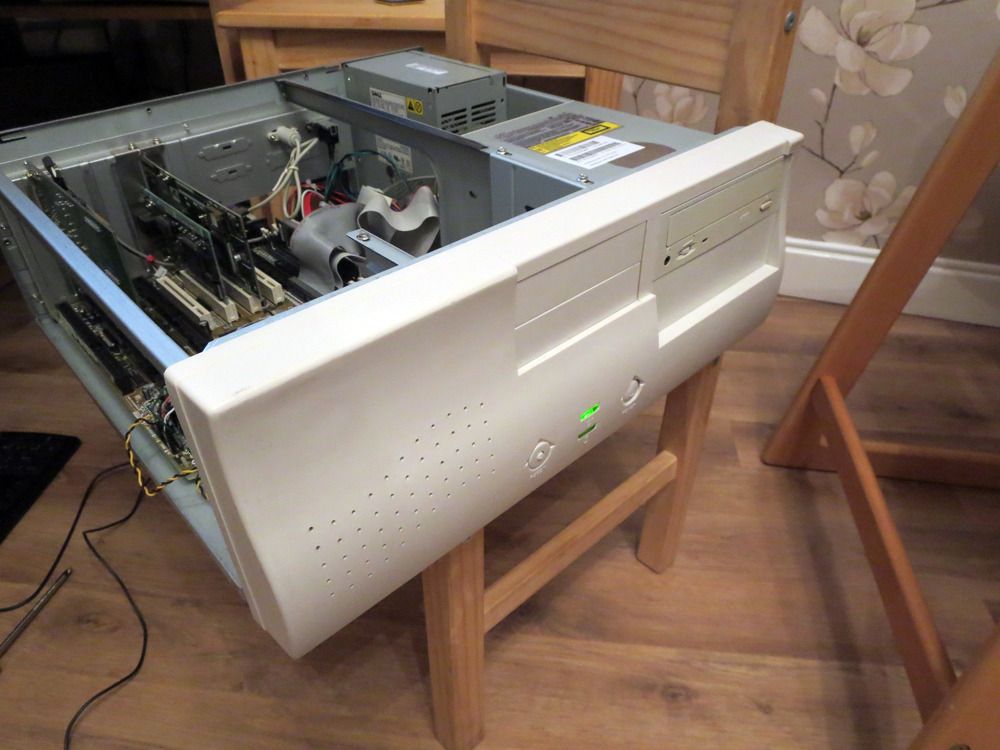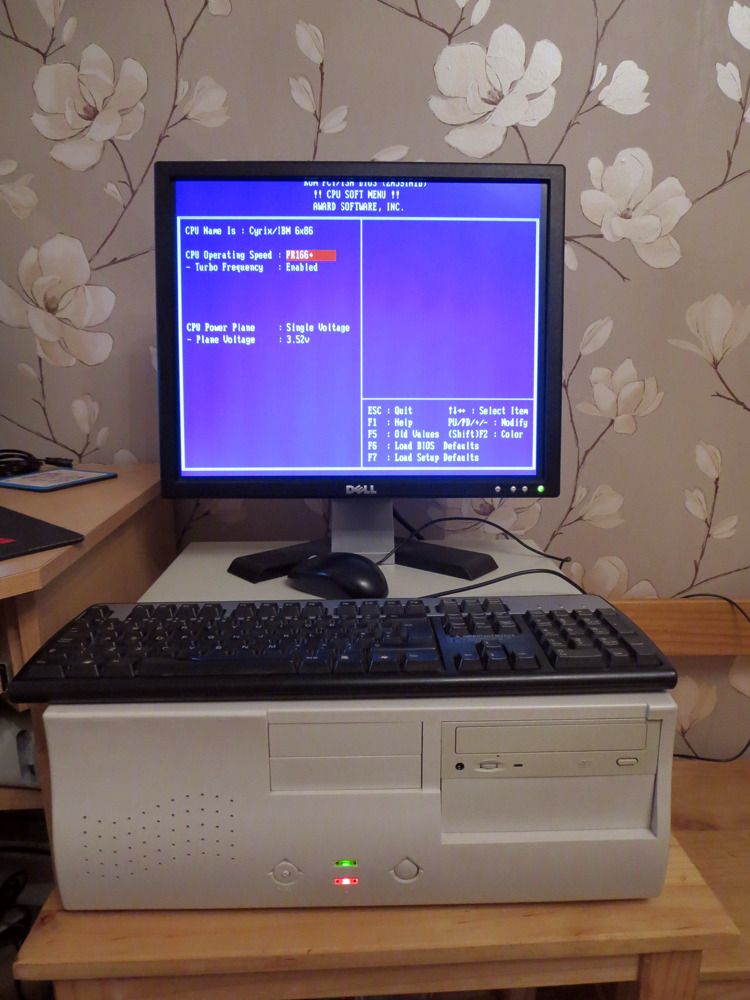First post, by foey
- Rank
- Member
Hey all,
I've not been doing much retro recently due to work and family commitments however I stumbled on a brand new/un-used desktop case which was not far from where I was working a week back on ebay. I popped in and picked it up for the pricey sum of ... 50p.
Now it left me with a dilemma, what to build in it? I've got Pentium MMX, K6-2, Athlon K7, Pentium III & Pentium 4 builds already nested away. So went through my parts and found it!

I'd build a Cyrix DOS based machine. I have a number of socket 7 boards but ended up going for the Abit AB-PX5 due to it's 430 Chipset and the easy CPU clock selector in the bios.
The Cyrix processor in question is a Cyrix 6x86-PR166+ which was meant to compete directly with the Pentium 166 as a much cheaper alternative. Although rated at 166 (PR Rating) it runs at 133mhz.
So onto the build. The internals of the case has some terrible sharp edges, after an few minutes of building my hands were covered in cuts. I don't know if you can see but the top rail I actually covered with some black electrical tape to soften it! It was quite roomy inside.

Being a ATX case I used a ATX to AT converter and mounted the switch on the rear as I didn't want to mess with the pre-installed power button on the front (Cheaply made case!) I've also mounted the PS2 onto the case as I hate using the risers as they always tend to bend.

My brand new, un-used socket 7 cooler in action cooling the Cyrix. Apparently rated up to 1.4Ghz - can you imagine cooling a 1.4 Athlon Thunderbird 🤣

Case needs a Cyrix Badge 😀

Available speeds selectable :- PR120, PR133, PR150, PR166 (Currently being used) & PR200 (Yes, it does run without any issues at this speed)

Specifications
Cyrix 6x86-PR166+ (133mhz) Processor
32mb SD-RAM
Abit AB-PX5, Intel 430 Motherboard
4mb ATi Rage IIC (Mach64) PCI Graphics Card
Creative AWE64 Value (CT4500) Sound Card
48x Compaq CD-ROM / Using QCD to limit to 4x
Seagate 4.3Gb ATA Hard Drive
Intel 100 PCI NIC (From 1996)
Windows 95c with Plus Pack
DELL ATX 250w Power Supply
Overall I'm happy, part of me wants to get a more period correct CD-ROM drive - then again QCD solves the noise issue and it reads everything including CD-RWs. I need to get a floppy drive, currently only have black ones spare.
I need to swap out the ATi card at some point, whilst the quality is clear, it's very noisy - almost like your using a poor quality pass through cable.
I do have a Intel Pentium MMX 200mhz staring at me on the desk, whilst it would be much quicker (Esp in games such as Quake) I already have a MMX233 AT build. It's something about it being different 😀
Cyrix Instead Build, 6x86 166+ | 32mb SD | 4mb S3 Virge DX | Creative AWE64 | Win95
ATC-S PIII Tualatin Win9x Build :- ATC-S PIII Coppermine Win9x Build Log [WIP] **Photo Heavy**
